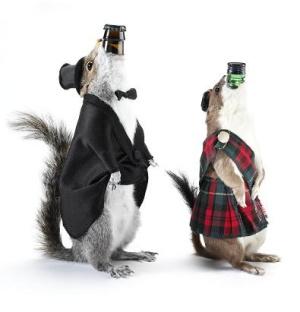 Even before the rise of craft beer, there have been those who have sought out the world’s rarest beers. In much the same way as a collector of fine wine seeks out rare vintages from the best producers, beer collectors seek beers made by brewers – both foreign and domestic – that may have seen very limited distribution and yet are of the highest quality. Rare beers fall into three categories: whales, white whales and ghost whales.
Even before the rise of craft beer, there have been those who have sought out the world’s rarest beers. In much the same way as a collector of fine wine seeks out rare vintages from the best producers, beer collectors seek beers made by brewers – both foreign and domestic – that may have seen very limited distribution and yet are of the highest quality. Rare beers fall into three categories: whales, white whales and ghost whales.
Whales are big beers that saw distribution in just a small geographic area or had a wider distribution, but it had a relatively small amount released to distribution. Beers like 3 Floyds Brewing Company’s Dark Lord, a massive Russian Imperial Stout brewed with coffee, Mexican vanilla and Indian sugar, have gained cult status and are highly-sought among beer traders. In the case of Dark Lord, the beer is only released one day per year at a ticketed event thrown by the brewery. If you don’t go to the event, the only way to get a bottle is from someone who did or someone who traded with someone who did.
White Whales are those beer that are even more rare than whales. These beers often come from small producers who only sell bottles from their brewery or have extremely limited distribution. It is not unusual for a U.S. city to only get one or two six-bottle cases per year of this type of beer. Cantillon, a producer of lambic beers located in a somewhat run-down neighborhood of Brussels, Belgium produces a number of beers that cause beer geeks to squeal like a child getting his or her first puppy. Often, Cantillon’s beers can only be purchased at the brewery in Brussels. Add to that the process it takes to produce a lambic – lambics are often blended from beers of varying age and fruit additions – and you have a recipe for a rare beer. In the case of Cantillon’s Lou Pepe Gueuze, two-year-old lambic aged in barrels that previously held wine is used to coax a mellow flavor. Bottles of pre-2002 Lou Pepe are particularly rare and push the limit of white whale and could fall in to the realm of ghost whale.
The rarest beers, those that saw only a few bottles leave the brewery are called ghost whales. These are beers that could easily sell for thousands of dollars among collectors. Beers like Brew Dogs’ The End of History falls squarely into this category. Only 12 bottles were produced of this 55% ABV brew and those were famously – and to some horrifically – presented in packaging that consisted of a taxidermed roadkill squirrel or stoat (also known as the short-tailed weasel). Those original bottles, brewed in 2010, sold for $765 each and came with a signed certificate of authenticity. But, the brewery recently announced a re-re-release of the controversial beer that will sell for $20,000 and includes an ownership stake in the Brew Dog.
For the run-of-the-mill beer hunter, snagging a whale brew like Cigar City Brewing Company’s Hunahpu’s Imperial Stout – released only one day per year at the brewery’s annual release day/beer festival – is a reason to celebrate. To others, only something like the white whale Lost Abbey’s Duck Duck Gooze – an American-brewed, Belgian-style gueuse – that is extremely difficult to get hold of will do. Regardless of your preference for whales, if you get your hands on one, the decisions have just begun. Should you drink it, cellar it, trade it? My advice, do what you want, it’s yours. But, I am inclined to drink it!
Advertisements &b; &b;